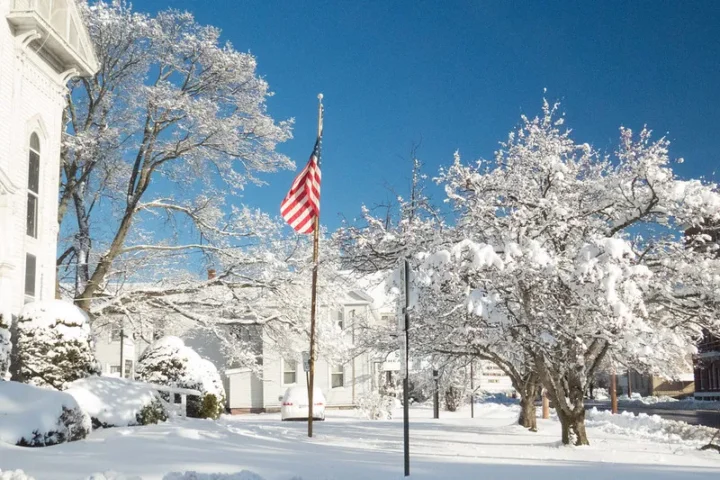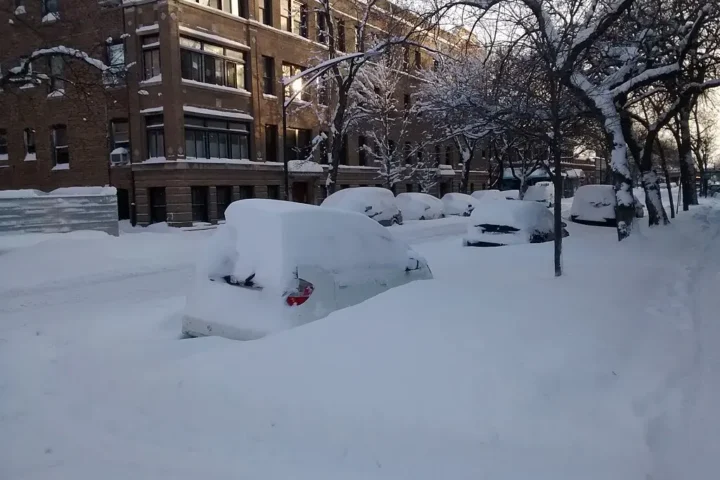In a major reorganization announced yesterday, the U.S. Department of Agriculture (USDA) will relocate more than half of its Washington-area workforce to five regional hubs across the country. Secretary Brooke Rollins described the move as bringing USDA “closer to” the farmers and ranchers it serves.
The Relocation Plan: Numbers and Locations
The plan will shift approximately 2,600 of USDA’s 4,600 D.C.-area employees to regional centers in Raleigh, North Carolina; Kansas City, Missouri; Indianapolis, Indiana; Fort Collins, Colorado; and Salt Lake City, Utah. No more than 2,000 staff will remain in Washington, D.C.
“American agriculture feeds, clothes, and fuels this nation and the world, and it is long past time the Department better serve the great and patriotic farmers, ranchers, and producers we are mandated to support,” Rollins stated in the announcement.
The relocation targets several USDA facilities around Washington, including the Beltsville Agricultural Research Center and one headquarters building on the National Mall. These properties will be returned to the General Services Administration (GSA).
Program Consolidations and Workforce Changes
Beyond physical relocations, the plan includes significant program consolidations:
- National Agricultural Statistics Service (NASS) offices will be reduced from 12 to 5
- Forest Service regional offices, currently numbering 9, will close despite ongoing fire season concerns
- Over 15,000 USDA employees have already accepted voluntary separation incentives
USDA officials maintain that no mass layoffs are planned as part of the reorganization.
Regional Hub Locations and Pay Differences
The five selected hub locations come with varying federal locality pay rates that will affect relocated employees:
- Raleigh: 22.24% locality pay adjustment
- Kansas City: 18.97%
- Indianapolis: 18.15%
- Fort Collins: 30.52%
- Salt Lake City: 17.06%
These rates compare to Washington D.C.’s 33.94% locality pay adjustment, meaning most relocated staff will see lower compensation adjustments based on local cost of living.
Security and Contract Changes
The reorganization announcement comes alongside termination of approximately 70 foreign contract researchers amid a national security review. This action appears separate from but concurrent with the relocation effort.
Economic Impact on Hub Cities
Local economic development officials expect the influx of federal employees to bring economic benefits to the chosen hub cities. New office leases, increased local spending, and service-sector growth in Raleigh, Kansas City, and other locations will likely provide regional economic boosts.
Similar Posts
Cost Savings and Budget Implications
Previous USDA relocations provide some insight into potential financial impacts. The 2019 move of Economic Research Service (ERS) and National Institute of Food and Agriculture (NIFA) to Kansas City projected $300 million in 15-year savings, according to USDA figures.
However, the Government Accountability Office found those estimates omitted critical factors like attrition costs and productivity disruptions. USDA has not yet released comprehensive cost-benefit analyses for the current, larger-scale relocation.
Research Continuity Concerns
The closure of Beltsville Agricultural Research Center raises questions about ongoing scientific studies. Reports suggest the facility houses specialized laboratories, some with biocontainment capabilities for pathogen research. Transition plans for research projects, sample storage, and laboratory equipment remain unclear.
Workforce Diversity and Experience Challenges
Previous USDA relocations suggest potential impacts on workforce demographics. After the 2019 ERS/NIFA move to Kansas City, about 70-75% of affected employees declined to relocate. When those positions were refilled, the agencies had a workforce that was substantially less experienced and with a markedly lower share of Black staff (from 47% to 19% at NIFA).
Congressional Oversight and Legal Framework
The relocations follow a July 2025 Supreme Court decision that lifted injunctions on agency reorganizations, clearing legal hurdles for USDA’s plan. The ruling overturned a lower-court stay that had temporarily blocked similar efforts at the State Department.
Union Response
The American Federation of Government Employees (AFGE) has criticized the relocation. AFGE Vice President Ruth Verardo, echoing her earlier objections to USDA’s 2019 relocation, said the move “accelerates the loss of mission-critical staff who cannot or will not move.”
Wildfire Response and Forest Service Changes
The closure of nine Forest Service regional offices comes during what has been a severe fire season in several western states. The USDA plan mentions that implementation will “take into consideration the ongoing fire season.”
GAO Oversight and Recommendations
GAO’s analysis of the 2019 USDA relocations identified several areas for improvement in future efforts. A 2022 GAO report found that USDA’s site-selection process “discounted locations that scored high on stakeholder proximity and staff retention metrics.”
The GAO Comptroller General recently emphasized the need for transparent, evidence-based analyses in agency relocations, stating, “Without full cost accounting, taxpayer savings figures remain unreliable.”
Cybersecurity Considerations
Experts have raised concerns that a decentralized USDA network creates potential cybersecurity challenges as staff and systems disperse to multiple locations. The department has not detailed plans for secure remote access protocols or network infrastructure investments at the hub locations.
Historical Context
This reorganization echoes but significantly expands upon the 2019 USDA relocations of ERS and NIFA to Kansas City. That earlier move, which affected fewer employees, still resulted in significant workforce disruption and continuity challenges that took years to resolve.
Next Steps in Implementation
USDA has not announced specific timelines for the relocations, though the agency has stated they will occur in phases. For the thousands of affected employees, decisions about whether to relocate or seek other employment will need to be made in the coming months.



















